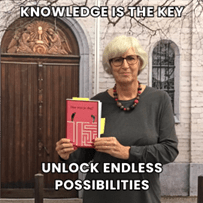Here are seven more tips that can help you make the most of your time. Not necessarily to do more, but to spare some time for what truly matters in life.
1. Start Early or Work Later than Others
The morning hours are often the quietest and least distracting. By waking up early, you can take advantage of this peaceful time to tackle your most important tasks without interruptions. Early birds often say they have their most productive hours before the rest of the world wakes up. On the other hand, if you're more of a night owl, you can benefit from the hours when others have gone home. These hours can also be quiet, allowing for concentrated work.
2. Regular Physical Exercise
Exercise not only stimulates your body but also your mind. Whether it's a morning jog, an afternoon walk, or a short stretching break, physical activity can help refresh you and boost your concentration. Moreover, it helps to reduce stress. Combine this tip with the pomodoritechnique, or make your breaks active.
3. Eat Healthily
Nutrition plays a crucial role in your cognitive functions and energy levels. By opting for nutritious meals and snacks, you provide your body and mind with the fuel needed to function effectively. My mother knew this better than anyone. Especially during exams, she would serve the healthiest snacks. So, try to eat regular meals and avoid excessive caffeine or sugar.
4. Break Down Large Tasks into Smaller Steps
A large project can seem daunting. By breaking it into smaller, manageable tasks, you can focus on completing each step individually. This also creates a sense of accomplishment with each task completed. Combine this tip with good planning.
5. Set Clear Deadlines
Deadlines can serve as a powerful motivator. Even if there's no external deadline, setting your own can help you stay on track and be accountable for your progress.
6. Gebruik de Twee Minuten Regel
This simple rule suggests that if a task takes less than two minutes to complete, you should tackle it immediately. This prevents small tasks from piling up and eventually taking up a lot of time.
7. Surround Yourself with Motivated People
While tip 1 advises you to work when it's quiet and there aren't too many people to distract you, it's a different story when you have people around whose energy and attitude positively influence your mindset. Surrounding yourself with motivated and positive individuals can indeed draw inspiration and motivation from their enthusiasm and drive.
Do you have any other tips to increase your efficiency? Share them below.












